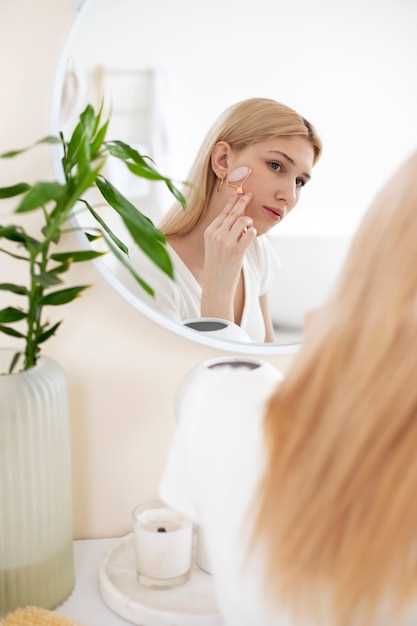
Are you tired of searching for the perfect skincare routine that will leave your skin looking flawless and radiant? Look no further! In this comprehensive article, we will unveil the secrets to achieving healthy and glowing skin that will make heads turn.
Embark on a journey towards a more youthful and vibrant appearance as we delve into the world of skincare. Learn how to nourish your skin from within and unlock the key to a radiant complexion that will boost your confidence and leave you feeling beautiful.
With our expert tips and tricks, you will gain a deeper understanding of the importance of skincare and how it can transform your daily routine. Discover the power of natural ingredients and the science behind effective skincare products that will revolutionize your beauty regimen.
Whether you are a skincare enthusiast or a beginner looking to enhance your routine, this ultimate guide will provide you with the knowledge and tools necessary to achieve the skin of your dreams. Say goodbye to dullness and hello to a luminous glow that will leave everyone wondering about your secret.
Understanding Your Skin Type

Exploring the unique characteristics of your skin is essential for establishing an effective skincare routine. By understanding your skin type, you can tailor your approach to address specific concerns and achieve a healthy and radiant complexion.
Identifying Your Skin Type
When it comes to skincare, one size does not fit all. Each individual possesses a distinct skin type, which can be categorized into several common classifications. These include:
- Oily Skin: Characterized by excess sebum production, oily skin tends to have a shiny appearance and is prone to acne and blemishes.
- Dry Skin: Lacking in natural oils, dry skin often feels tight and may experience flakiness or rough patches.
- Combination Skin: A combination of both oily and dry areas, this skin type typically exhibits an oily T-zone (forehead, nose, and chin) while the cheeks remain dry.
- Normal Skin: Considered the ideal skin type, normal skin is well-balanced, neither too oily nor too dry, with a smooth texture and minimal imperfections.
- Sensitive Skin: Easily irritated and prone to redness, sensitive skin requires gentle care and is often reactive to certain ingredients or environmental factors.
Assessing Your Skin’s Needs
Once you have identified your skin type, it is crucial to understand its specific needs and concerns. Oily skin may require products that help control excess oil production, while dry skin may benefit from moisturizers that provide intense hydration. Combination skin necessitates a balanced approach, targeting different areas accordingly. Normal skin can benefit from a consistent skincare routine to maintain its natural balance, while sensitive skin requires gentle and soothing products to minimize irritation.
By comprehending your skin type and its unique requirements, you can make informed decisions when selecting skincare products and treatments. Remember, a personalized approach is key to achieving and maintaining healthy, radiant skin.
Daily Cleansing Routine for Clear Skin
Discover the essential steps to achieve a flawless complexion with a daily cleansing routine that promotes clear and radiant skin. By following these simple yet effective practices, you can maintain a healthy and glowing appearance.
Step 1: Gentle Cleanser
Start your daily cleansing routine by using a gentle cleanser that suits your skin type. Look for a product that is free from harsh chemicals and fragrances, as these can strip the skin of its natural oils and cause irritation. Massage the cleanser onto damp skin using circular motions, paying extra attention to areas prone to breakouts or congestion.
Step 2: Exfoliation
Exfoliation is a crucial step in any skincare routine as it helps remove dead skin cells and unclog pores, allowing for better absorption of skincare products. Choose a gentle exfoliator that contains natural ingredients such as jojoba beads or fruit enzymes. Use it 2-3 times a week, applying it to damp skin and massaging in circular motions. Rinse thoroughly with lukewarm water.
Remember, over-exfoliating can lead to skin irritation, so it’s important to find the right balance for your skin type.
Step 3: Toning
After cleansing and exfoliating, it’s time to tone your skin. Toning helps balance the pH levels of your skin and removes any remaining impurities. Choose an alcohol-free toner that contains soothing ingredients like rose water or chamomile extract. Apply the toner to a cotton pad and gently swipe it across your face and neck, avoiding the eye area.
Toning not only refreshes your skin but also prepares it for the next steps in your skincare routine.
Step 4: Hydration
Hydrating your skin is essential for maintaining its health and radiance. After toning, apply a lightweight moisturizer that suits your skin type. Look for a product that contains hydrating ingredients like hyaluronic acid or glycerin. Massage the moisturizer onto your face and neck using upward motions, allowing it to fully absorb into the skin.
Don’t forget to apply a separate eye cream to the delicate skin around your eyes to keep it hydrated and prevent the appearance of fine lines and wrinkles.
By incorporating these steps into your daily cleansing routine, you can achieve clear and glowing skin that radiates health and vitality.
Importance of Exfoliation for Skin Renewal
Enhancing the natural process of skin renewal is crucial for maintaining a healthy and radiant complexion. Exfoliation plays a vital role in this process, helping to remove dead skin cells, unclog pores, and stimulate the production of new skin cells. By incorporating regular exfoliation into your skincare routine, you can achieve a smoother, brighter, and more youthful-looking skin.
Exfoliation aids in the removal of accumulated dirt, oil, and impurities that can clog the pores and lead to various skin issues such as acne, blackheads, and dullness. By sloughing away these surface impurities, exfoliation allows for better absorption of skincare products, maximizing their effectiveness.
Regular exfoliation also promotes the production of collagen, a protein responsible for maintaining the skin’s elasticity and firmness. As we age, the natural production of collagen decreases, leading to the appearance of fine lines and wrinkles. By exfoliating regularly, you can stimulate collagen production, helping to reduce the signs of aging and promoting a more youthful complexion.
There are different methods of exfoliation, including physical exfoliation using scrubs or brushes, and chemical exfoliation using products containing alpha-hydroxy acids (AHAs) or beta-hydroxy acids (BHAs). It is important to choose the right exfoliation method and products suitable for your skin type to avoid irritation or damage.
- Physical exfoliation involves using gentle scrubs or brushes to manually remove dead skin cells. This method is suitable for most skin types, but it is important to avoid harsh scrubbing or using abrasive products that can cause micro-tears in the skin.
- Chemical exfoliation, on the other hand, utilizes AHAs or BHAs to dissolve the bonds between dead skin cells, allowing them to be easily sloughed off. AHAs are effective in targeting the surface layer of the skin, while BHAs can penetrate deeper into the pores, making them suitable for oily or acne-prone skin.
It is recommended to exfoliate 1-2 times a week, depending on your skin’s sensitivity and needs. Over-exfoliation can lead to skin irritation and dryness, so it is important to listen to your skin and adjust the frequency accordingly. Remember to always follow up with a moisturizer and sunscreen after exfoliation to protect and nourish your newly revealed skin.
In conclusion, exfoliation is a vital step in achieving healthy and radiant skin. By incorporating regular exfoliation into your skincare routine, you can effectively remove dead skin cells, unclog pores, stimulate collagen production, and reveal a smoother, brighter complexion.
Nourishing Your Skin with the Right Moisturizer
Enhancing the health and radiance of your skin requires proper nourishment, and one essential element in achieving this is choosing the right moisturizer. A well-suited moisturizer can provide your skin with the necessary hydration and nutrients it needs to maintain its natural glow and vitality.
When selecting a moisturizer, it is important to consider your skin type and specific needs. Different skin types require different levels of hydration and ingredients. For instance, if you have dry skin, you may benefit from a moisturizer that is rich in emollients and humectants to lock in moisture and prevent dryness. On the other hand, if you have oily or acne-prone skin, a lightweight, oil-free moisturizer with ingredients like salicylic acid or tea tree oil can help control excess oil and prevent breakouts.
Another factor to consider is the climate and environment you live in. If you reside in a dry or cold climate, a heavier moisturizer with occlusive ingredients like shea butter or ceramides can provide a protective barrier against harsh weather conditions. Conversely, if you live in a humid climate, a lighter, water-based moisturizer can help prevent clogged pores and excessive oiliness.
Furthermore, it is essential to pay attention to the ingredients in your moisturizer. Look for nourishing components such as hyaluronic acid, glycerin, or aloe vera, which can deeply hydrate and soothe the skin. Antioxidants like vitamin C or green tea extract can also help protect the skin from environmental damage and promote a youthful appearance.
Remember to apply your moisturizer correctly for optimal results. After cleansing and toning your skin, gently massage the moisturizer onto your face and neck using upward motions. Allow it to fully absorb before applying any makeup or sunscreen. For added nourishment, consider incorporating a night cream into your skincare routine to replenish and rejuvenate your skin while you sleep.
- Choose a moisturizer suitable for your skin type and needs
- Consider the climate and environment you live in
- Pay attention to the ingredients in your moisturizer
- Apply your moisturizer correctly for optimal results
By nourishing your skin with the right moisturizer, you can enhance its health and radiance, leaving you with a glowing complexion that exudes vitality and beauty.
Protecting Your Skin from Harmful UV Rays
Shielding your skin from the damaging effects of ultraviolet (UV) rays is essential for maintaining a healthy and radiant complexion. Exposure to these rays can lead to premature aging, sunburns, and an increased risk of skin cancer. By taking proactive measures and incorporating sun protection into your daily skincare routine, you can safeguard your skin from the harmful effects of UV radiation.
1. Wear Sunscreen: Applying a broad-spectrum sunscreen with a high SPF (Sun Protection Factor) is crucial for shielding your skin from both UVA and UVB rays. Look for a sunscreen that offers protection against a wide range of wavelengths and has an SPF of 30 or higher. Remember to reapply every two hours, especially if you are spending time outdoors.
2. Seek Shade: When the sun is at its peak, typically between 10 a.m. and 4 p.m., seek shade to minimize your exposure to direct sunlight. If you must be outside during these hours, consider wearing protective clothing, such as a wide-brimmed hat and long-sleeved shirts, to provide additional coverage.
3. Wear Sunglasses: Protecting your eyes from UV rays is just as important as safeguarding your skin. Choose sunglasses that offer 100% UV protection to shield your eyes from harmful radiation. This can help prevent eye damage and reduce the risk of cataracts and other eye conditions caused by prolonged sun exposure.
4. Use Protective Clothing: In addition to sunscreen, wearing clothing that covers your skin can provide an extra layer of defense against UV rays. Opt for lightweight, breathable fabrics with a tight weave to block out the sun’s harmful rays. Don’t forget to protect your scalp by wearing a hat or using a scarf.
5. Be Mindful of Reflection: UV rays can bounce off surfaces like water, sand, and snow, increasing your exposure. Take extra precautions when you are near reflective surfaces by applying sunscreen more frequently and wearing protective gear to minimize the reflected rays.
6. Avoid Tanning Beds: Tanning beds emit UV radiation that can be even more intense than the sun’s rays. Avoid using tanning beds altogether to reduce your risk of skin damage and the development of skin cancer.
7. Check the UV Index: Stay informed about the UV index in your area. The UV index provides information about the strength of UV radiation and helps you plan your outdoor activities accordingly. When the index is high, take extra precautions to protect your skin.
Remember, protecting your skin from harmful UV rays is a year-round commitment. Whether it’s sunny or cloudy, UV rays can still penetrate through the clouds and cause damage. By following these tips and making sun protection a priority, you can maintain healthy and radiant skin for years to come.
Incorporating Healthy Habits for Glowing Skin
Enhancing the natural radiance of your skin goes beyond just following a skincare routine. It involves adopting a set of healthy habits that nourish and rejuvenate your skin from within. By incorporating these habits into your daily life, you can achieve a glowing complexion that exudes vitality and youthfulness.
1. Nourish Your Body
One of the key factors in achieving healthy and radiant skin is nourishing your body with the right nutrients. A well-balanced diet rich in vitamins, minerals, and antioxidants can provide your skin with the essential building blocks it needs to maintain its health and vitality. Incorporate plenty of fruits, vegetables, whole grains, and lean proteins into your meals to ensure your skin receives the nourishment it deserves.
2. Stay Hydrated
Hydration is crucial for maintaining the elasticity and suppleness of your skin. Make it a habit to drink an adequate amount of water throughout the day to keep your skin hydrated from within. Additionally, you can incorporate hydrating foods such as cucumbers, watermelon, and leafy greens into your diet to further boost your skin’s hydration levels.
Furthermore, practicing good skincare habits such as cleansing your face twice a day, using a gentle exfoliator to remove dead skin cells, and applying a moisturizer suitable for your skin type can also contribute to achieving a healthy and radiant complexion. Remember, consistency is key when it comes to skincare, so make these habits a part of your daily routine to reap the long-term benefits.
By incorporating these healthy habits into your lifestyle, you can enhance the natural beauty of your skin and achieve a radiant complexion that reflects your overall well-being. Remember, taking care of your skin is not just about external treatments, but also about nourishing your body and adopting a holistic approach to skincare.

